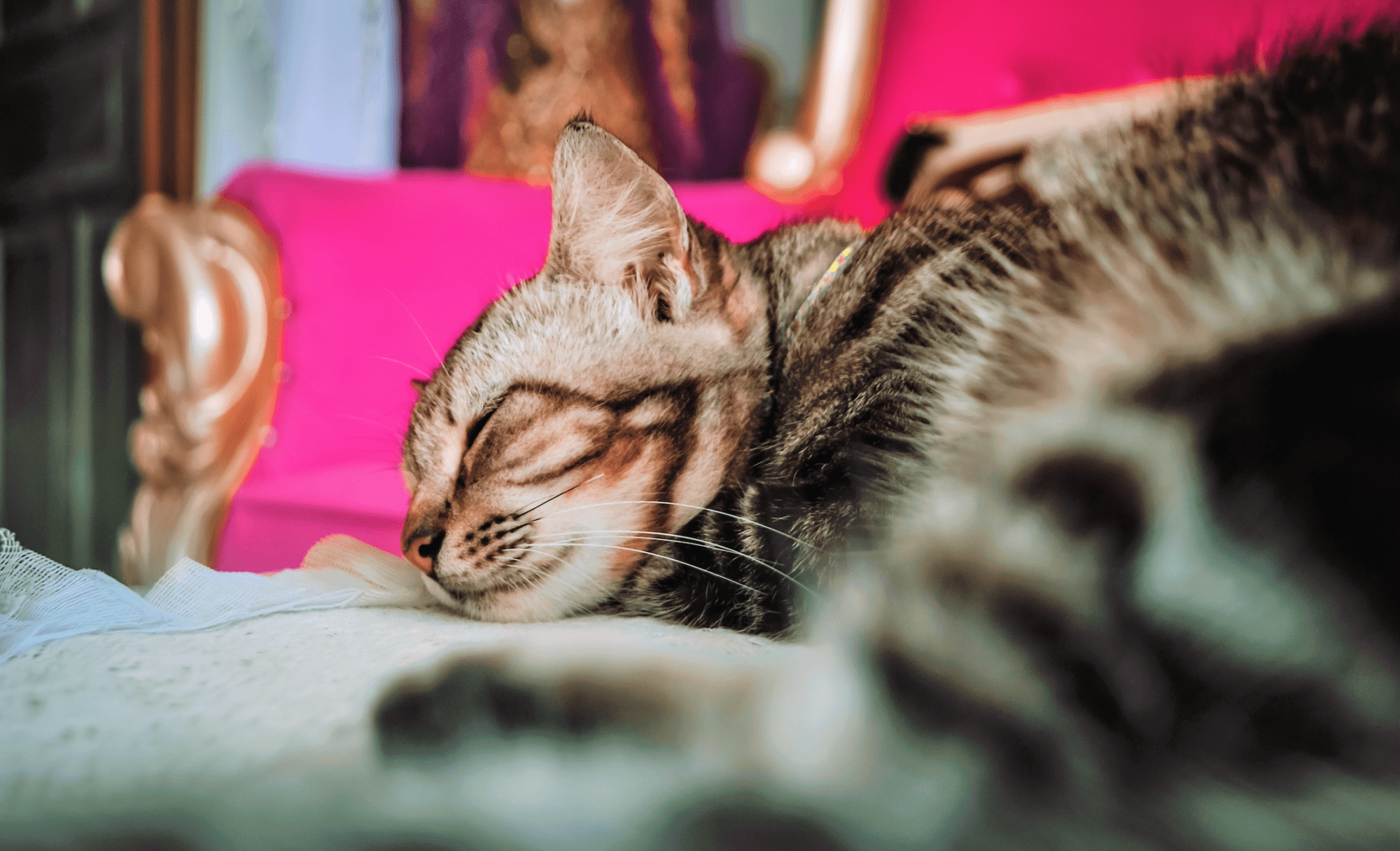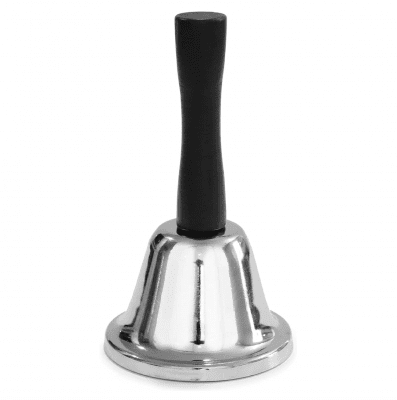Is It Possible To Train A Cat? Yes and No! – Cat training insight from those who know.
Share

Is it possible to train a cat? The answer is yes and no. While one does not train a cat the same way one would train a dog, it can be done. It might be better to look at it like helping your cat to add a few new habits to their daily routine. Either way you look at it, your cat is capable of learning and being trained, but they have to decide they want to.

Like humans, no two pets are exactly alike, but so often cats are lumped into one personality group while dogs are lumped into many. The truth is that each pet has an underlying personality, particular nature about them and a certain amount of willingness to please. As different dog breeds have a reputation of being smarter, faster or stronger and others shyer, slower, and gentler, the same is true for cats.
You will want to play into their personality and willingness to learn as you begin training. Choose one behavior or trick you want to work on and stick with that until they have it down, which could take weeks. Cats are creatures of habit, so look at it like you are creating a new habit for your pet.
Cat Training Basics
Cats are able to associate desirable behavior with rewards. This is beneficial for both stopping bad behavior and encouraging “good” behavior, enhancing a happier and healthier relationships with kitties. It is important to think about cat training in two distinct quadrants, behavior and tricks. While a cat is capable of performing tricks, the focus of basic training is to improve every day life.
Cat Training Check List:
- Treats – stock up on your cat’s favorite treats. Most cats will not respond without a little goodie. Reward only good behavior and do your best to ignore bad behavior which will actually encourage good behavior.
- Schedule – plan a time, daily if possible, to make sure training sessions are consistent and your cat can count on them. After a nap is a great time to plan on training.
- Focus – you need to be able to devote 100% of your attention on training, turn off your phone’s ringer, gather treats and organize gadgets before you begin.
- Consistency – choose one behavior or trick at a time, repeat the same behavior and do it over and over and if using hand singnals, use the same cues each time you train.
Be patient, prepared and ready to enhance your relationship with your kitty. Don’t be hard on yourself or you cat if the training does not seem to be going well. It takes time, consistency and flexibility depending on how your cat reacts.
Here are some common cat training methods:
Click Sticks & Buttons
To enhance training results, offer a clicking sound when training our kitty. You can use your mouth, button or sticker stick. Start by associating the clicking sounds with a reward and once that is accomplished, you can introduce a new skill or behavior and then create a cycle of reinforcement.
Note: Pets are actually learning how to communicate with buttons and if you have a cat who has an interest in learning how to do so, you will have a very unique relationship with your pet.

This clicker and stick combo is a great tool for training cats and guide them to “good” behavior.
Cats Have Extraordinary Hearing. Little does the squeaky mouse tiptoeing through your house know that he is broadcasting his position with each step. Your cat’s cone-shaped ears can pick up sounds and movements up to five times stronger than humans can, which helps him pinpoint the exact location of the source.
According to VetStreet.com
Hand gestures and signals
If you want to try a quieter approach, a focus on hand signals might be the best training tool for you. Using repeated hand gestures, along with sound is also an effective method. Choose a variety of signals that represent good behaviors or tricks. You will want to focus on one gesture at a time and use them every time you work with you furry friend. Hand gestures are best used for cats that pay attention and respond to them.
Note: bells, noise makers and water bottles should only be used when your cat is in danger. Loud noises, water bottles and other scary tools do not allow you to train your cat, you simply scare them away. If your cat puts themselves in harm’s way you might need to have a bell or water bottle for their safety, but do not use for training purposes.

This brass bell is a great choice for pet training or a reminder when you don’t want them to do something.
Cat Training Tips:
- Reinforce Good Behavior – cats respond to positive reinforcement. Punishment is not effective as cats do not connect the punishment with the behavior well. Focussing on good behavior is better for you and for your cat.
- Litter Box Training – most cats instinctively use the litter box, but if they don’t a little role model training may be in order. Show kittens how to use their little box by helping move their paws in the litter box. If you kitty is not using their litter box properly, there could be an underlying cause and not a training issue.
- Carrier or Backpack Training – helping you kitty see a carrier ride as their idea is the best way to help them to adapt. Let them explore, place their favorite toy inside and add a treat for them to find. Repeat this until they begin spending more time in the carrier. Next close the gate or zip the closure for small periods of time, allowing them to get used to it. Finally carry them inside the carrier for small periods of time to get them used to the movement. Time and patience is the best training advice for carriers.
Note: Make carrier training a priority so your cat will soon be comfortable when it’s time to travel or visit the vet.
- Sit Training – teaching your cat to sit can come in handy. Simply stand or sit in front of your cat, and when they sit naturally, reward them. Start using the “sit” cue after they start sitting in anticipation of the treat. Soon they will associate the cue with the behavior.
- High Five – the high five is a fun party trick. Start by having your cat sit in front of you, and offer them a treat. If your cat’s paw comes off the ground, give them a treat. Once your cat is reaching for your hand, raise it up in small increments. Your cat will soon reach higher and higher for the treat. When your cat is finally performing the high five, replace the treat with praise and chin scratches.
- Staying off counter tops – cats love to jump on counter tops, which can be unnerving and cause damage. Training a cat to stay off the counter is possible by using double-sided tape or an object the cat doesn’t like to discourage them from jumping up there. If they do jump on the counter, calmly and gently put them back on the ground. If they know the sit command, this is a good time to use it. When your cat sits and doesn’t jump back up onto the counter, give them their treat.
- Biting or kicking with hind legs – it’s not uncommon for cats to bite or kick, but it can become a problematic behavior. If your cat bites or kicks because of a boundary or privacy issue, respect your cat’s space. If your cat bites or kicks out of rough play, however, disengage, and ignore your cat. When your cat stops being rough, reward the calm behavior. Another way you can discourage cat bites is by disengaging and offering your hand for licks instead. Do this by putting a treat or some cat food on the back of your hand or fingers. By letting your cat lick the treat off of your hand, they learn a better way to engage with your hand when in a playful mood.
Note: Cat training can also provide positive mental and physical stimulation for cats, which can help reduce anxiety, aggression, or other destructive cat behaviors. Consistent cat training can also help you pick up on their body language and learn what they’re trying to communicate (including the many ways they show they love you!) If you’re unsure whether you’re ready to get a cat due to the prospect of bad behavior, factor in the effectiveness of cat training in your decision.
- Scratching furniture – the easiest way to prevent scratching furniture is to provide a scratching post or tree. If that doesn’t solve the problem, place double-sided tape over the area to discourage your cat from using it. Keep in mind that cats use scratching posts for claiming territory and how they leave their pheromones in strategic places. A cat is more likely to use a scratching post if it’s in plain sight or in a room others occupy, too. If you cat does scratch the furniture, check out these great products in Pet DIY Repair Shop.
- Destructive Chewing – not only is destructive chewing annoying to deal with, but it can also be very dangerous. This is especially true if your cat likes to chew on electrical cords. Prevent destructive chewing by hiding objects or spraying them with a Bitter Apple Deterrent. You can also redirect them to chew sticks or other cat toys like catnip balls.
- Eating houseplants – there are many houseplants that are poisonous to cats, review this list and remove any that you might currently have in your home or put them in a space that your cat does not have access. For plants that may be considered pet-friendly, but are still off limits, you can use double-sided tape, spray Bitter Apple Deterrent or place them under a Plant Screen. You may also want to consider growing cat friendly catnip indoors or out. Check out our Pet Garden Shop filled with pet-lover garden gifts, supplies and catnip garden supplies.
- Howling for food – like clockwork, some cats will start yowling and meowing close to mealtime to get your attention. The best way to stop incessant cat meows is by simply ignoring the behavior. Your cat will soon learn there is no reward for this and stop. Try making them sit while you prepare their food to show them only good behavior will get them what they desire.
Whether you want your cat to be safer in their environment, stop unwanted behavior, or show off a few cat party tricks, training cats is great way to get the job done. A few minutes of your time each day will not only keep your cat mentally and physically stimulated, but also forge a better relationship between you and your kitty.











